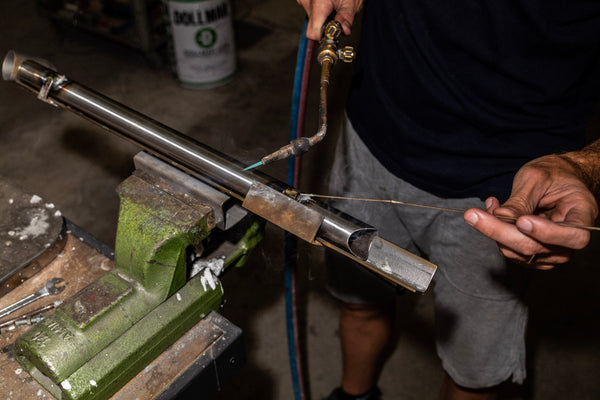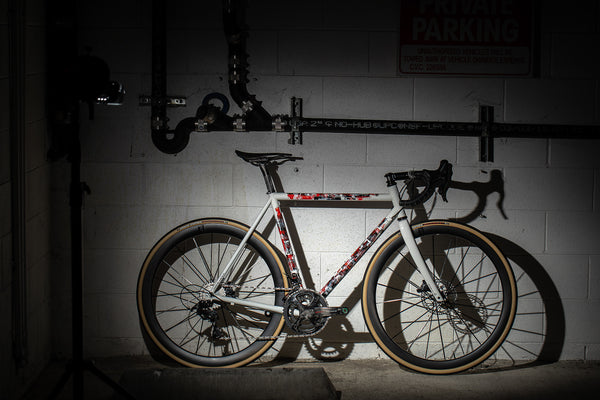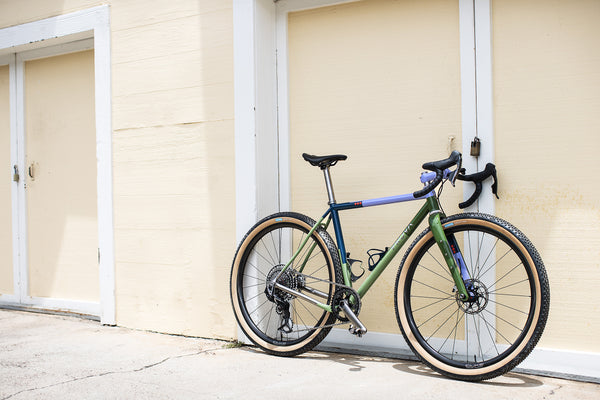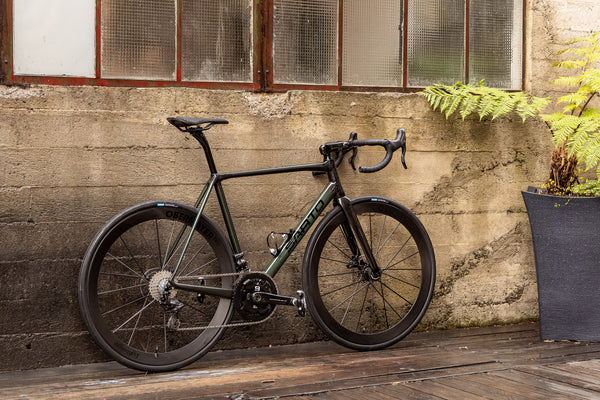Gravel. Gravel grinding. Gravel racing. "Mixed-surface". Groad. All-road. Dirt. #roadbikesondirt
Love the nomenclature or not, the rise of the gravel riding phenomena is real. In response, the industry has engendered a whole new category of bike, one that itself defies categorization. It's the gravel bike, and some 3-4 years after the trend has really taken hold, new components are arriving targeted specifically at the genre, from forks to tires to wheels.
What, exactly, is a gravel bike? The best answer we can think of is a drop-bar bike with road-leaning geometry, clearance for bigger, knobbier tires, and disc brakes.
"Sounds like a cyclocross bike", one might say - and that's right. Sort of. The cyclocross moniker tends to encompass a very broad range of bikes. At one end, traditional European 'cross racers with high bottom brackets, lax handling, low standover height, and one bottle cage. All aspects are centered on one thing - the cyclocross race course, with its short pitches, tight corners, lower overall speeds, and repeated mounting/dismounting. At the other are more "Americanized" bikes with geometry inching closer to the road to account for higher speeds typical of racing in the US, as well as the tendency for CX bikes here to be used for more than one purpose. At the end of the day, much of the divide is simply semantics. But, with the development of frames and components targeted squarely at gravel riding/racing, the need to break those bikes out into their own category evolved.
Enter the Mosaic GT-1 (Gravel Titanium), the Boulder builder's top-end gravel bike, introduced this past year. Designed around ENVE's new GRD fork (more on this in a minute), the GT-1 is a weapon designed to accomplish everything a traditional road bike can, with extended capability onto the dirt and clearance for 38mm tires. The GT-1 is based on Mosaic's road-going RT-1, using the same rider-specific custom-butted titanium top and downtubes, and smaller diameter S-bend seatstays for comfort during marathon events like the Belgian Waffle Ride and Dirty Kanza. While many counterpart frames from production brands skew towards something more relaxed, the launch GT-1 Mosaic shipped us for our review (head builder Aaron Barcheck's personal bike) is significantly more aggressive, embracing the ride height of a standard road racing bike, with a lively steering feel, low bottom bracket, and a lightweight Di2/ENVE build. This made the GT-1 not only livable for "mixed-surface" rides, but downright fast - so much so that we found ourselves going on standard road rides on the titanium monster. Of course, every GT-1 comes with fully custom geometry, allowing us to tune the handling/ride qualities of the bike to suit the desires of the individual rider. At 18-19lbs (depending on rubber), it wasn't the lightest road bike in the world, but certainly not the heaviest, and the aforementioned geometry tweaks made it quite enjoyable on tarmac. It's worth noting that this is where a cyclocross bike tends to stumble - they're taller, more ungainly, and just not as fun to ride on the road as a bike with geometry like a purpose-built machine like the GT-1. With the Mosaic, we found ourselves setting PRs on road descents, in large part thanks to the generous amount of wheelbase and tire beneath us, as well as the superb braking control only a hydraulic setup offers.
The frame itself is compliant, but not overly so - the longer rear-end and small-diameter seatstays helped, while the 142x12mm thru-axle rear end and oversized T47 bottom bracket gave the GT-1 snap in the right situations. ENVE's GRD fork up front is something of a revelation for a bike like this. As a comparison, the ENVE CX fork is almost 1.5cm taller. It's the difference between coring an apple with a 4" paring knife and an 8" chef's blade. Both get the job done just fine, but the smaller, more nimble version is going to be quicker, neater, cleaner, and more importantly, more enjoyable at getting the job at hand done. The GRD was plenty stiff, especially mated to an oversized headtube, though having to carry a 6mm hex key for the 12mm thru-axle in case of a flat was a slight annoyance that hearkened back to the days of trailbikes with 20mm thru-axle forks.
The bike was equipped with a drivetrain/braking kit we're well-acquainted with - Shimano's Dura-Ace Di2 9070 electronic group, mated to the R785 brake levers and disc calipers. For hydraulic brakes and electronic shifting, it doesn't get much lighter. Shifting was mostly flawless. We even swapped the crank for Quarq's Shimano-compatible Elsa RS powermeter mated to an SRM PC8 and our favored "gravel race" 2x setup, a super compact 52/34 tooth chainring combination. No, we didn't race the Giro on it, and no, shifting with the large tooth gap wasn't incredible, but it worked pretty well thanks to Di2's powerful front derailleur motor. The only shifting hiccup we encountered had us rethinking wired electronic systems on gravel bikes, however. Midway through the 147-mile Belgian Waffle Ride, the wire from the rear shifter to the junction box on the stem rattled loose underneath the handlebar tape. In a standard riding situation, it would've been annoying. In a semi-race situation like the BWR, it was frustrating. There's no fast way to fix the issue, short of unwrapping the bar, plugging the offending wire back in, and rewrapping. Perhaps a mechanical or wireless shifting setup is more prudent in gravel applications.
For wheels, the GT-1 arrived with ENVE's lightest mountain offering - the M50, laced to Chris King hubs. Tubeless compatible, 1400g, wide, and stiff, they were without fault for the duration of our test. At this stage in the game, the M50 is our choice for gravel use, at least until a more specific carbon wheel/rim setup is released. Initially, they were shod in Clement's new Strade USH, a 32mm gravel-specific tire designed to offer plentiful grip off-road while still rolling quickly on pavement. Unfortunately, we didn't find the latter was true - the Strade hooked up nicely in the dirt, but rolled like an M1 Abrams tank on the road, nearly as poorly as a true knobby. For the Waffle Ride, we swapped the tires for the Hutchinson Sector 28mm, a tubeless road tire designed around cobbles racing. While the tubeless setup on the M50s was a breeze, and at 55psi the tires were a dream to ride (as well as quite puncture-resistant), they were a hair outgunned off-road. Hutchinson has released a 32mm version of the tire that wasn't ready in time for our review, and Schwalbe has also dropped the new S-One and G-One tires in 32mm and 35mm widths that are also intriguing as fast-rolling off-road capable tires (and as of this writing unavailable). Look for more updates on our quest for the perfect "everything" tire soon.
All this considered, at the Waffle Ride, for some 8-odd hours, we never found ourselves wanting another bike. The GT-1 was an excellent blend of the supple smooth of ti with the responsiveness we've come to know (and love) from Mosaic. Those same ride qualities make it an excellent bike off the race course as well, a bike we can grab anytime there's a chance of dirt on our long rides in Marin County. Peppering a standard road ride with fireroads, singletrack, and log rollovers introduces a new element to the "standard loop" that keeps riding fun and novel. Sending this bike back home to Colorado is bittersweet, but rest assured, we're completely sold on the concept.

















Back to Journal